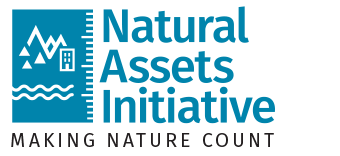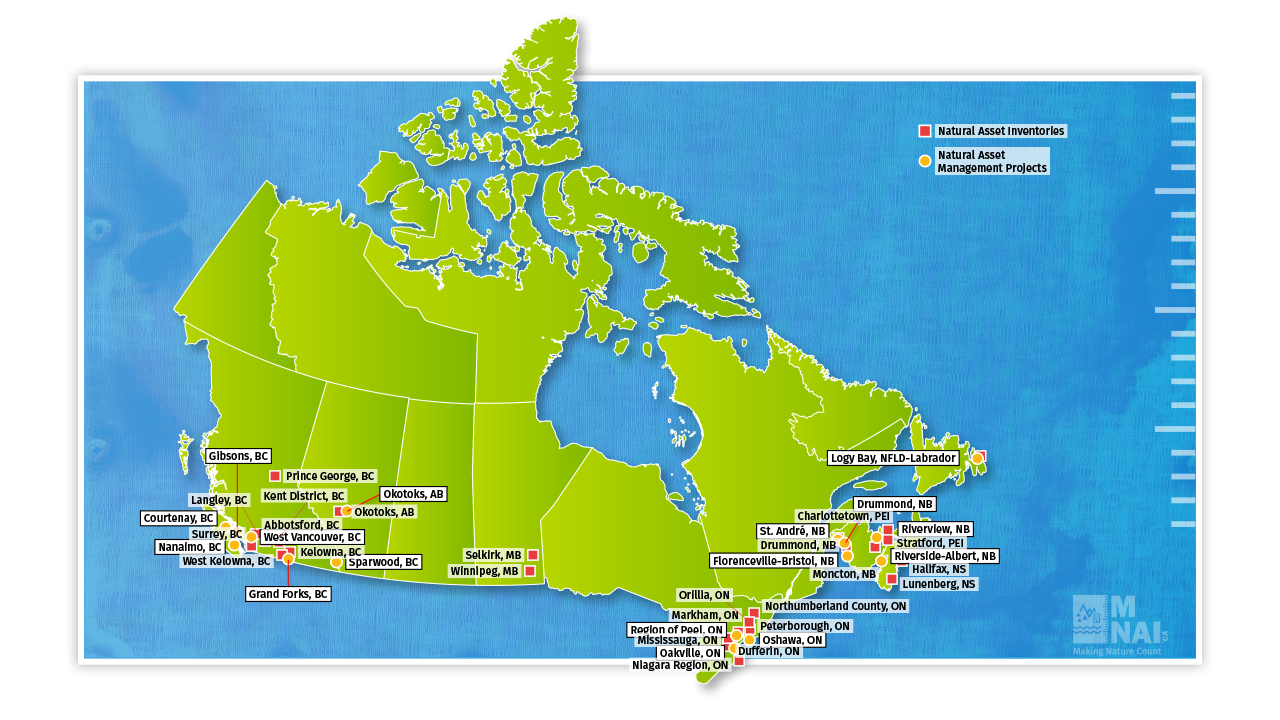The path to scale
Only a few short years ago the Town of Gibsons, BC, pioneered natural asset management and for a while was the single, isolated local government practicing the approach. The Municipal Natural Assets Initiative (MNAI) emerged from their initiative and today, more than 100 Canadian local governments have worked with MNAI on natural asset management.
Good news? Yes… but…
On one hand, such progress is encouraging, particularly given that proactively managing natural assets has now spread across so many provinces and in different sizes and types of local governments.
On the other hand, the rate at which local governments are adopting natural assets management is simply not yet keeping pace with the scale of the challenges it can help address. So, is progress on a slow-and-steady pathway going to match the scale of challenges local governments need to meet?
Say 100 communities adopt natural asset management every five years. That’s considerably more than one new local government every month. Even at that rate, it would take 40 years for each of Canada’s nearly 3,600 local governments to understand, account for, protect and manage their natural assets as vital infrastructure.
This is out-of-step with the state of the country’s needs to manage challenged engineered municipal infrastructure, ensure services are delivered in a changing climate, for climate change adaptation and mitigation more generally, and to protect our biodiversity.
Clearly, the rate at which local governments adopt must accelerate – hard.
MNAI went through a strategic planning process, courtesy of Vancity Credit Union, to determine how to accelerate and scale up natural asset management. Through this process, MNAI determined that achieving its mission of making natural asset management a mainstream practice across Canada in a reasonable time frame will take a lot more than just working one-by-one with local governments. It will take a change in systems.
Based on research of system change in other contexts, what we need is a new economic sub-sector for natural asset management.
In simplest terms, this means Canada would have:
- Widespread market demand for natural asset management. In other words, local governments understand and want natural asset management.
- Multiple, qualified people and organisations to meet that demand – trained practitioners in local government and working with local government to meet the demand for natural asset management.
- Professional norms so the many disciplines that work with local governments have recognized, high-level national standards so that “natural asset management” means the same thing everywhere.
- Knowledge, capacity, academic programs and training to ensure that norms are well-taught and applied so there are enough people with strong foundational knowledge and skills.
As a loose analogy, this is similar to what exists for green building certifications. And as these pieces click into place, they will enable more funds to flow to natural asset management.
This systems-level change will happen when many organizations work towards a common goal, each bringing their own strengths and unique roles to the process. Here is what MNAI is doing to help make this happen; these types of efforts will ensure that natural asset management is meaningful, rigorous commonly understood and demonstrably effective.
- Building tools for the job
- MNAI continues to work with local governments to build and mobilize a wide range of tools, built on existing asset management platforms, to help them on their natural asset management journey. We are constantly subjecting products to peer review, learning, evolving, and sharing to make sure local governments have the tools to ensure natural asset management is core business, not a side project. The Level of Service Guidebook is a recent example.
- Developing norms and standards with stakeholders
- The recent announcement of natural asset management norms from BC’s engineers and geoscientists regulator is one example of what we believe will be a legion of new professional standards and guidance. In 2022, we will be working to extend this experience to other professions and provinces, using a new roadmap as the basis.
- The recently-announced development of a CSA Group National Standard for one part of the natural asset management cycle may sound innocuous but is a big step towards normalizing natural assets management – one we will replicate with CSA Group in other areas that may benefit from standards.
- Training and Curriculum Development
- MNAI is working with stakeholders to map a journey towards an effective national natural asset management curriculum. This is a complex undertaking and will help answer questions such as “What do people really need to know to be trained in natural asset management?” “What are the core competencies?”
- Creating more practical examples
- As standards and training programs are developed and applied, many other entities may work directly with local governments. This would allow MNAI to focus more on building and enhancing the overall enabling environment for natural asset management, which would be great. But until that day, we will work with all local governments that want to so we can help develop and share more positive and compelling examples of what can be achieved by proactively managing natural assets.
These are what MNAI sees as the foundations of the path to scale. At the same time, our other efforts include research and engagement to determine, for example, the potential role of private sector financing in natural asset management, and where the rights of Indigenous people (United Nations Declaration on the Rights of Indigenous Peoples) can best be reflected in practice. Fundamentally, these efforts will help ensure that all communities in Canada can benefit from reliable service delivery based on healthy, biodiverse and connected ecosystems.
In the end, the 100 or so more communities are, of course, good news. It would be even greater news when most or all Canadian local governments undertake natural asset management in a reasonable time frame, and their examples inspire other sectors and even other countries to do the same. MNAI will play its part in helping us get there.


